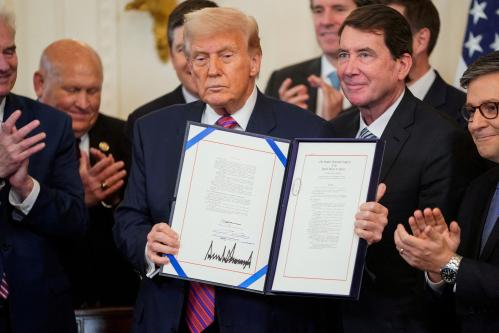Laura Wolvaardt’s brilliant 90 set up a dominant 150-run (DLS method) win for South Africa against Pakistan at the ICC Women’s Cricket World Cup 2025 at the R Premadasa Stadium in Colombo on Tuesday.
The Proteas blasted their way to a…

Laura Wolvaardt’s brilliant 90 set up a dominant 150-run (DLS method) win for South Africa against Pakistan at the ICC Women’s Cricket World Cup 2025 at the R Premadasa Stadium in Colombo on Tuesday.
The Proteas blasted their way to a…

A bunch of college friends make a deal with the wrong dragon in Joe Hill’s new horror fantasy novel “King Sorrow,” but that’s just the start of the genre-smashing thrills. Over nearly 900 pages, the book also contains an airline disaster…
This request seems a bit unusual, so we need to confirm that you’re human. Please press and hold the button until it turns completely green. Thank you for your cooperation!

Paleoanthropologists have unearthed and examined a hominin partial skeleton that includes hand and foot bones unambiguously associated with skull elements of Paranthropus boisei, a species of early hominin that lived in East Africa between 2.3…

The GENIUS Act creates the U.S. regulatory framework for payment stablecoin issuers to operate in the U.S. or for foreign entities to offer stablecoins to U.S. residents. While the GENIUS Act clarifies much, financial regulators must now write rules that will determine if stablecoins can gain trust and contribute to a more efficient, lower cost payments system, or if they will continue to be used mainly for crypto trading and for users in some countries to more easily access U.S. dollars.
The GENIUS Act makes clear that payment stablecoins are neither a security nor a national currency, nor do they have deposit insurance or access to Federal Reserve payment services. The law says that payment stablecoin issuers can be nonbank entities (federal or state qualified) or subsidiaries of insured depository institutions (IDIs). Issuers’ activities are restricted to offering and redeeming stablecoins and ancillary activities.
This article highlights four key issues for regulators as they implement the GENIUS Act:
First, financial regulators need to write capital, liquidity, and risk management requirements for issuers within 18 months to ensure stable value, and to protect financial stability and the singleness of money (to the maximum extent possible without central bank settlement).
Second, the Treasury, Federal Reserve (Fed), and Federal Deposit Insurance Corporation (FDIC) need to set conditions under which nonfinancial companies can issue stablecoins to avoid excessive concentration of economic power or increase financial stability risks.
Third, the Treasury needs to make sure that the “comparable regulatory regime” for foreign issuers to offer stablecoins to U.S. residents is as strong as the rules for domestic issuers to reduce arbitrage incentives.
Fourth, FinCEN, a bureau of the Treasury responsible for implementing and enforcing compliance with Anti-Money Laundering/Countering the Financing of Terrorism (AML/CFT) rules, needs to write new regulations to ensure issuers have the technological capacity to counter illicit finance.
Stablecoin activity has been growing rapidly on a global basis. U.S. dollar-backed stablecoins (backed by reserve assets and not an algorithm) reached more than $260 billion in the third quarter of 2025, with Tether’s USDT accounting for more than one half of the total, and Circle’s USDC showing the fastest growth since the end of 2020. In addition, monthly transactions have risen to more than $1 trillion, about 10 times the volume at year-end 2020. While stablecoins can reduce the costs of cross-border remittances and multinational corporate cash management, this type of activity appears to still be limited.
In addition to reducing transaction costs, stablecoins, other digital dollars such as tokenized bank liabilities, as well as non-digital (near) real-time fast payments could create significant benefits for the economy by reducing the hidden costs of inefficient payments.1 Payment transactions overall could increase if more efficient payments enable the valuable transactions that did not occur because of high fixed costs and lengthy clearing and settlement processes. These include small payments or short-term loans to households and small businesses that are impractical when fixed costs are high and value is not transferred quickly. Instantaneous, programmable payments on a 24/7 basis also could better meet future demand for “on chain” payments as securities become tokenized or as agentic AI pays in real time for its purchases of data and computing power as it generates content.
At the same time, stablecoin issuance could be concentrated because of network externalities of payment systems. If rules are weak and stablecoins fail to gain trust, they could be out-competed over time, while along the way increasing risks to financial stability, fracturing the monetary system, and facilitating money laundering and terrorist financing.
The defining characteristic of stablecoins is their use as money. This relies on an issuer’s ability to trade stablecoins for dollars, in full and on time. The GENIUS Act provides for stable value and liquidity by limiting the types of assets that can back a stablecoin on at least a one-to-one basis and requires monthly disclosures and certification of audited financial statements. However, a significant problem with GENIUS is that the permissible reserve assets include uninsured deposits in banks and shares of credit unions. But uninsured deposits are risky and illiquid, raising the possibility that stablecoins backed by these assets will not offer a stable value and will be prone to runs—unless these risks aremitigated by capital, liquidity, and risk management standards. Moreover, allowing stablecoins to hold uninsured bank deposits creates direct two-way interconnections between the risk of banks and the risk of stablecoins.
Without appropriate standards to reduce runs and limit interconnections, stablecoins could create the type of fire sale dynamics from prime money market mutual funds (MMFs) during the Global Financial Crisis. Prime MMFs promised stable value and were allowed to invest in risky deposits and commercial paper of financial companies. In 2007-2008, when financial firms began to suffer losses from subprime mortgages, prime MMFs could not maintain par. Without capital to offset the losses, investors ran, and the Reserve Primary Fund was forced to close, leading to a breakdown in broader short-term funding markets and threatening market and credit intermediation. In addition, accounting standards allowed for prime MMFs to be held as a cash-like asset. Companies that had prime MMFs in cash-like operational accounts liquidated their shares on concerns they would not be able to access funds to meet regular payroll and other expenses, further exacerbating the runs. The Treasury and the Fed had to step in.
Currently, the largest stablecoin issuers hold a significant share of assets that are not risk-free or liquid. Recent financial statements indicate that Circle USDC had almost 14% of its portfolio in the deposits of regulated financial institutions, likely exceeding the deposit insurance limit of $250,000 per account. For Tether USDT, about 20% of reserve assets were in assets that were not cash and cash equivalents, and included secured loans, Bitcoin, precious metals, and other investments.
To reduce financial stability risks and to build trust in stablecoins, financial regulators should require stablecoin issuers that want to hold more uninsured deposits of financial institutions to have higher capital and liquidity standards than issuers that are invested mainly in safer and more liquid assets. The GENIUS Act allows for this—the federal regulator can “include capital buffers that are tailored to the business model and risk profile” and “are necessary to ensure the ongoing operations;” that is, to ensure the financial integrity and the ability of the issuer to meet the financial obligations, including redemption. The law also allows regulators to require asset diversification. Establishing appropriate requirements would go a long way to preventing stablecoins from being an information-sensitive asset (see Gorton and Zhang, 2023), like bank notes of the 19th century wildcat banking era. During that time, banks issued their own bank notes, but transactions were inhibited by the ability of holders of these bank notes to assess their fluctuating values, and many banks failed.
In addition, GENIUS does not prohibit permitted payment stablecoins from being counted as a cash or cash-equivalent asset on a corporate balance sheet. Accounting standard-setters should restrict stablecoins from being categorized as a cash-equivalent asset if prudential requirements are insufficient to prevent runs.
A second problem with the permissible reserve assets is that GENIUS allows for both Treasury repo and Treasury reverse repo transactions—that is, an issuer can both borrow and lend based on Treasury collateral. The inclusion of Treasury repo transactions appears to be to allow stablecoin issuers to access funds without having to sell their Treasury securities to meet liquidity needs. Instead, the issuer could borrow under a repurchase agreement—sell the Treasury security and receive cash with an agreement to buy back the security the next day. (This is in contrast to a reverse repo transaction where the issuer could lend to a counterparty based on Treasury collateral received.)
Permitting Treasury repo as a reserve asset could pose significant problems if a stablecoin issuer were to fail. Under GENIUS, reserve assets are required to be held in segregated accounts to allow consumers access to their payment stablecoins even if the stablecoin issuer were to fail. But in bankruptcy, repo is exempt from the automatic stay that freezes a borrower’s assets and prevents collections once bankruptcy proceedings have been initiated. That means the repo lender could seize the Treasury collateral if the stablecoin issuer could not return the cash. In this event, assets in segregated accounts would fall short of what is needed for 1:1 redemption.
To address this risk, regulators should not permit the securities available for repo transactions to be included in the amount needed for 1:1 backing and held in segregated accounts. If repo borrowing is truly needed to provide cash to meet short-term liquidity needs on a regular basis, regulators should also set stricter liquidity standards for these issuers.
An important issue is the conditions under which nonfinancial companies will be permitted to issue payment stablecoins. The GENIUS Act does not strictly protect the separation of banking and commerce, which has been in place in the U.S. since at least the National Banking Act of 1863-64 to avoid inefficient credit allocation and excessive concentration of economic power.
GENIUS allows for a publicly traded nonfinancial company (a company not engaged in one or more financial activities, as defined by section 4(k) of the Bank Holding Company Act) to be a payment stablecoin issuer if the Stablecoin Certification Review Committee (SCRC) determines unanimously that it will not pose a material risk to the safety and soundness of the banking system, the financial stability of the U.S., or the Deposit Insurance Fund; and the company will comply with limitations on use of nonpublic personal information and anti-tying provisions as specified in the GENIUS Act. The SCRC is composed of the Secretary of the Treasury, the Chair of the Federal Reserve Board (or, if the Chair delegates, the Vice Chair for Supervision), and the Chair of the FDIC.
While Facebook abandoned its plans to issue a stablecoin called Libra (later re-formulated as Diem), concerns persist as large technology and retail firms consider issuing stablecoins. Serious risks to economic and monetary stability could arise if nonfinancial firms can take advantage of existing private data from their platforms or raise the costs of switching to other payment products. In addition, because payments systems build on network externalities—the system is more valuable the more participants there are—it is likely there will be only a few stablecoin issuers in a concentrated market. The SCRC should seek public input on any determinations. In addition, a glaring loophole is that privately held nonfinancial companies are not prohibited from issuing stablecoins. Regulators can’t fix this; only Congress can.
The Secretary of the Treasury has the authority to issue a safe harbor to a foreign issuer of stablecoins to offer stablecoins to U.S. residents if they are subject to comparable foreign regulations. The Secretary would need to submit a justification for any safe harbor determination to the chairs and ranking members of the Senate Banking Committee and the House Financial Services Committee.
Regulators should provide input into what frameworks would meet “comparable foreign regulation” to avoid arbitrage and to ensure that the provisions of GENIUS to protect consumers, mitigate risks to financial stability, and enforce compliance with rules against money laundering and terrorist financing would be preserved.
Additional input from regulators is needed to address the risks that stablecoins could be used increasingly for illicit finance activities. GENIUS clarifies that a payment stablecoin issuer is subject to Bank Secrecy Act requirements; that stablecoins offered by a foreign issuer may not be offered for trading in the U.S. by a digital asset service provider (DASP) unless the issuer has the technological capability to comply and does comply; and instructs the Secretary of the Treasury to seek public comment to identify methods and techniques to detect illicit finance activity. In addition, FinCEN is required to issue within three years public guidance and rules on implementation of innovative or novel methods to detect illicit activity and tailored risk management standards.
Treasury issued a Request for Comment on Innovative Methods to Detect Illicit Activity Involving Digital Assets in August 2025 to get public input on innovative or novel methods, techniques, or strategies that regulated financial institutions use, or could potentially use, to detect illicit activity involving digital assets. In particular, Treasury asks commenters about application program interfaces, artificial intelligence, digital identity verification, and use of blockchain technology and monitoring.2 Companies are creating and improving software and data so that stablecoin issuers and DASPs can better identify illicit activities and take actions to freeze and block accounts engaged in these activities. FinCEN and federal and state regulators will need to ensure that such services are being used appropriately or developed internally to comply with high AML/CFT standards.
GENIUS is a landmark bipartisan effort that balances the potential benefits of stablecoins as a means of payment or settlement while mitigating serious risks for financial stability and the monetary system. Instantaneous programmable payments on a 24/7 basis could create significant economic value by enabling valuable transactions that did not occur because of high costs and long settlement periods and to meet future demands for “on chain” digital payments. The rules and standards that now need to be written to implement GENIUS are critical to determine if stablecoins will achieve their potential and have a place in a future payment system as other types of payment instruments also continue to develop.
This request seems a bit unusual, so we need to confirm that you’re human. Please press and hold the button until it turns completely green. Thank you for your cooperation!